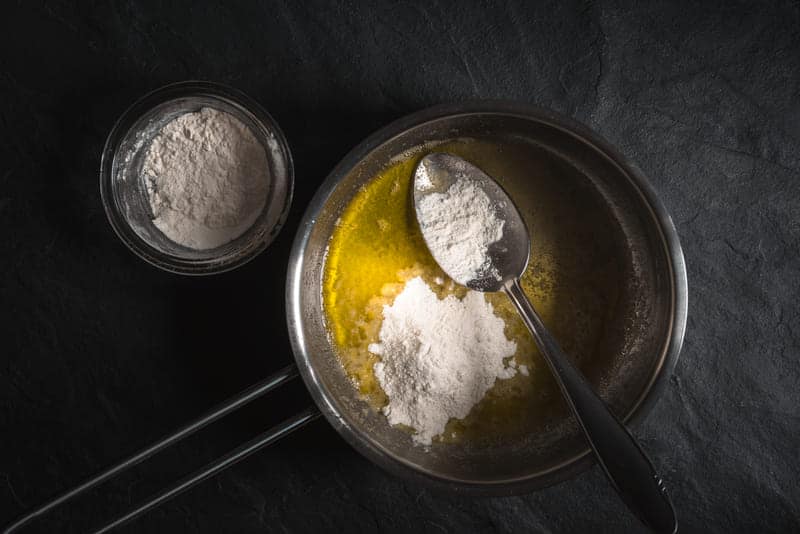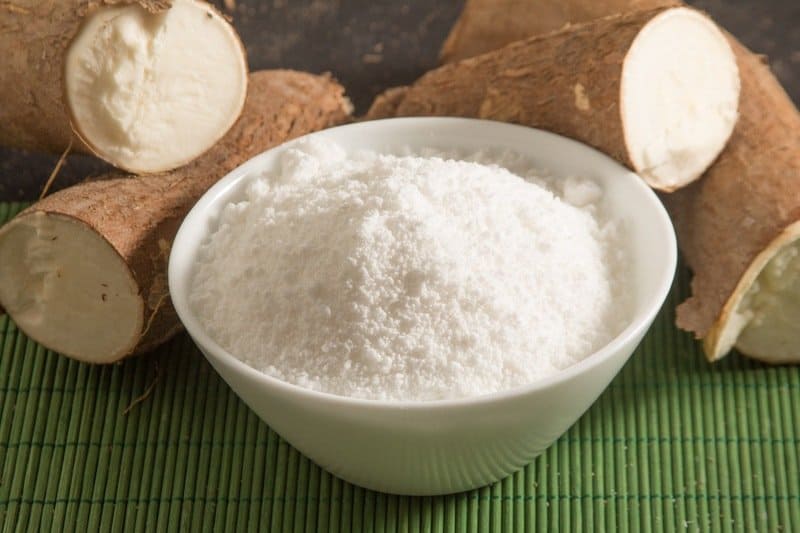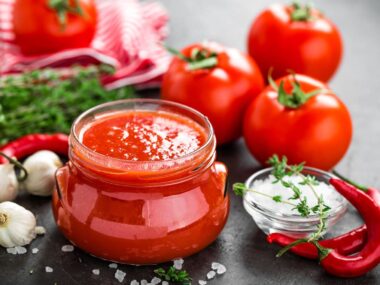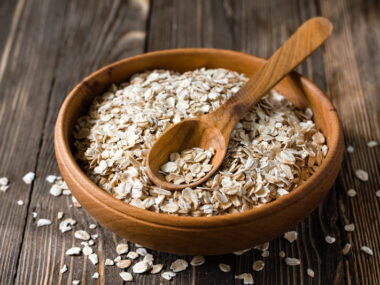Roux is an elemental part of most dishes such as Mac n Cheese, gumbo, gravy, chowders, etc. And, flour is a key part of roux. It is what makes your food thick, nutty, silky, or rich.
It is a misconception that you can’t make a roux without flour.
While that is partly true, you can make a roux without flour, too. Therefore, whether you’re out of flour or you want to make a gluten-free roux, you are in the right place!
So, how do you make a roux without flour?
The best way to make a roux without flour is to substitute flour with other ingredients and use the same recipe. With a lot of gluten-free recipes gaining popularity, no-flour roux recipes have come up, too.
Read on to learn how to make a flour-free roux.
What Can I Use Instead of Flour to Make a Roux?
If you’re out of flour or want to opt for a gluten-free recipe, don’t worry. You can still make a roux without flour.
Instead, you can use arrowroot or potato starch. You can also try starch from buckwheat, rice, potato, or barley. This might not give you the best thickening, but does the job.
If health is your main concern, you can try whey protein. Unfortunately, this doesn’t provide the same thickening and browning, either.
To get brown or dark roux, you need to add some seasoning which has proven to be a real game-changer in roux-making!
What is Roux?
A dish of French origin, roux is a smooth paste used as a thickener in many sauces, soups, and gravies. It is made of flour and fat (butter/oil). The main purpose of this mixture is to give a recipe a rich, smooth, and thick consistency.
The first use of roux as a thickener can be traced back to the 17th century, at the court of Sun King. The French colonists then took it along to the USA and now, has become a pivotal part of Cajun cooking.
What Are the Types of Roux?
There are 4 primary types of roux, named after their colors. They contain the same ingredients but differ in the cooking duration.
White Roux
This is the most common type of roux that takes part in many cheese sauces, instant soups, and béchamel. This is the first stage of roux formed after basic cooking, to eliminate the raw flavor of roux.
This type of roux is mildly grainy in texture and paler than when the ingredients were first mixed together.
Blonde Roux
This is formed when the white roux is cooked a little more and is thinner than the white roux. It has more of an off-white or tan color.
The flavor is more buttery, with an aroma that resembles toast or popcorn.
It’s an all-purpose roux, and is more suitable for quick pan sauces, like velouté. You can also use it in other gravies, stews, soups, and sauces.
Brown Roux
This type of roux is caramel-colored and has a nutty flavor and a stronger aroma. It’s used in soups and stews that have to be cooked while simmering.
Brown roux is also much thinner than other types of roux.
Dark Roux
This is the darkest type of roux with the strongest flavor.
It resembles melted milk chocolate in color and in flavor. This is used more as a flavoring agent than as a thickener. The thickening power of the roux decreases with cooking, while the flavor increases.
As a result, white roux has the highest ability to thicken foodstuffs, but with a bland taste. Dark roux, on the other hand, is used more for its flavor than its thickening.
Roux Without Flour Recipe
Making roux isn’t very complex.
Roux without flour is essentially the same recipe, except with substituting flour. Follow the below steps to create an efficient thickener without its elemental ingredient, flour.
Note that most roux recipes have butter in their ingredient list for its natural flavor. But to make a brown roux, it’s advisable to use either vegetable oil or canola.
You can also use bacon grease or melted shortening to decrease the flavor in the higher cooked roux. Follow the next steps for the best results.
- In a saucepan, add the required amount of butter (or oil). Set the flame to medium heat, and let the butter melt.
- Now, add equal amounts of any substitute mentioned above to flour and stir continuously. Add salt and seasoning as required.
- After a couple of minutes, the mixture gets bubbly and mildly foamy. It’d now have become a thick paste, with no more raw aroma. This is the white roux.
- To make a blond roux, continue stirring and cooking under medium flame for 10 more minutes. The thickening ability decreases, but the flavor certainly increases.
- For brown roux, continue the same for 20 more minutes. It has a very smoky quality with a nutty flavor and aroma.
- Doing the same for another 15 minutes would yield you a dark roux. Keep in mind that this decreases in quantity while cooking. So, use slightly more ingredients than you’d need.
How Do You Make a Roux Without Cornstarch or Flour?
Making roux without flour is pretty simple.
Like we’ve stated above, the recipe is essentially the same, except for the flour. Instead, a substitute like arrowroot, potato, buckwheat, rice, or barley starch is used.
In short, add equal parts of oil or butter and flour substitute in equal parts to a saucepan. Stir continuously till you get the desired color, aroma, and flavor.
What Can Be Used in Place of Flour as a Thickener?
Instead of flour, items you can use as a thickener include tapioca flour, arrowroot, potato, barley, buckwheat starch, chia seeds, or flax seeds.
Tapioca starch is a sweet, gluten-free option. Natural starches like that from potato, buckwheat, and barley are clear and tasteless. They work well in sauces, stews, and soups. It’s best not to use them in recipes that need boiling, though.
Arrowroot is a tasteless product, especially for non-dairy-based sauces. This is great if you plan on storing the frozen sauces. Note that overheating can reduce its thickening ability. This works best at lower temperatures.
Flaxseed is a vegan option and probably the best alternative to flour. Just use twice the amount of flaxseed as you would flour. Similarly, chia seeds can also replace all-purpose flour.
Related Questions
Can you use cornstarch to make a Roux?
No, cornstarch won’t form a roux. It can only prepare a slurry when mixed with water, which thickens your dish when you add it to it.
How to make a quick Roux?
Making roux in general (except brown/dark roux) is itself a quick process.
To do so, just melt butter or oil in a saucepan, and add an equal amount of flour or some of the substitutes above. Continuously stir until you get your desired form of roux.




